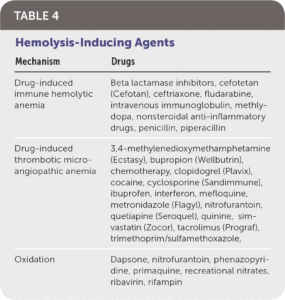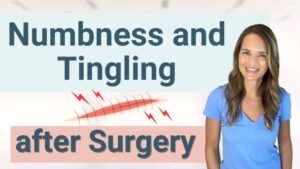Physical Therapy for Temporomandibular Joint Dysfunction (TMJ)
Understanding Temporomandibular Joint Dysfunction (TMJ)
Temporomandibular joint dysfunction (TMJ or TMD) is a chronic condition affecting 5% to 12% of adults, causing jaw pain and discomfort to varying degrees. While treatments like medications, dental interventions, and surgery are available, physical therapy offers a non-invasive approach to alleviate symptoms such as jaw pain, clicking, locking, and restricted movement. Dentists, particularly orofacial pain specialists trained in managing TMJ, headaches, and sleep disorders, often diagnose and treat this condition. This guide explores TMJ, its symptoms, causes, diagnosis, and how physical therapy can provide long-term relief.
What Is TMJ Dysfunction?
TMJ dysfunction refers to pain and impaired function in the jaw’s chewing muscles and the temporomandibular joint, which connects the jaw to the skull. Common symptoms include:
-
Jaw Pain or Tenderness: Often one-sided, described as dull or aching, worsening with chewing, yawning, or clenching.
-
Restricted Jaw Movement: Difficulty opening or closing the mouth fully.
-
Jaw Sounds: Clicking, grinding, or grating noises during jaw movement.
-
Jaw Locking or Catching: Moments where the jaw feels stuck or misaligned.
-
Jaw Misalignment: Deviation or discoordination while chewing or speaking.
Symptoms often intensify when chewing tough foods and are typically worse in the morning. Some individuals may also experience tension headaches, neck pain, tooth sensitivity, tinnitus (ear ringing), reduced hearing, or dizziness during TMJ episodes.
Causes of TMJ Dysfunction
The exact causes of TMJ remain complex and multifactorial, with no single profile defining those affected. It impacts 5% to 12% of the population, most commonly adults aged 18 to 44, with women affected four times more than men. Key contributing factors include:
-
Hormonal Fluctuations: Estrogen spikes during menstrual cycles, hormonal contraceptive use, or estrogen replacement therapy can trigger or worsen symptoms.
-
Joint and Muscle Issues: Displacement of the articular disc (cartilage cushioning the joint) or arthritis in the temporomandibular joint.
-
Dental and Structural Factors: Bruxism (teeth grinding), malocclusion (misaligned bite), or previous jaw injuries/surgeries.
-
Genetic Predisposition: A family history of TMJ may increase risk.
-
Stress and Habits: Chronic stress or habits like clenching can strain the jaw.
Diagnosing TMJ
If you experience persistent jaw pain or discomfort, consult a dentist or healthcare provider. TMJ diagnosis primarily involves a clinical evaluation, including:
-
Physical Examination: Palpating the jaw joint and surrounding muscles for tenderness, clicking, or locking while opening and closing the mouth.
-
Range of Motion Assessment: Checking for restricted movement or deviations in jaw alignment.
-
Imaging Tests: X-rays to detect arthritic changes or MRIs to assess the articular disc’s position.
If TMJ is ruled out, other causes like tooth decay, facial neuralgia, or neck arthritis may be explored.
How Physical Therapy Helps TMJ
Physical therapy is a cornerstone of TMJ management, focusing on pain relief, improved jaw mobility, and restored function through non-invasive techniques. A physical therapist (PT), ideally one with specialized training in temporomandibular disorders or craniofacial pain, will tailor a treatment plan to your needs. The process begins with a thorough assessment to establish baseline measurements and set goals.
Initial PT Assessment
During your first visit, the PT will:
-
Discuss your symptoms, lifestyle, and activities that worsen or alleviate discomfort.
-
Evaluate jaw and neck range of motion.
-
Measure jaw muscle strength and joint stability.
-
Identify habits (e.g., chewing patterns, posture) that may contribute to symptoms.
Physical Therapy Modalities for TMJ
Physical therapists employ a combination of in-office and at-home techniques to manage TMJ symptoms effectively. Common modalities include:
Heat and Cold Therapy
-
Heat Application (Thermotherapy): Relaxes jaw muscles, reduces stiffness, and eases morning discomfort. Use a heating pad on low or a washcloth soaked in water (no hotter than 140°F) for 10-15 minutes hourly as needed.
-
Cold Application (Cryotherapy): Reduces acute swelling and pain. Apply a cold compress or frozen peas for 10-20 minutes, moving it frequently to avoid frostbite. Place a towel between the compress and skin for safety.
Therapeutic Ultrasound
This non-invasive technique uses ultrasonic waves to warm tissues and improve joint mobility. Research, such as a study in the Journal of Physical Therapy Science, shows ultrasound combined with home exercises enhances pain relief and jaw function compared to exercises alone.
Massage and Soft Tissue Release
Massage therapy targets the jaw, facial, and neck muscles to reduce tension and inflammation. Techniques include:
-
Masseter Muscle Massage: Circular motions along the muscle from the cheekbone to the lower jaw.
-
Temporalis Muscle Massage: Gentle pressure and circular motions near the temples.
-
Intraoral Massage: Performed inside the mouth with gloved hands to release tight muscles.
Joint Mobilization
Manual techniques to adjust the jaw joint’s alignment, improving movement and reducing pain. The PT gently moves the joint to correct positioning and enhance function.
Setting Treatment Goals
Your PT will collaborate with you to create a personalized plan, combining in-office treatments with at-home exercises and self-care strategies. Goals typically include reducing pain, improving jaw mobility, and preventing symptom recurrence.
Benefits of Physical Therapy for TMJ
Physical therapy offers a holistic, non-invasive approach to TMJ management, helping you:
-
Alleviate pain and discomfort without relying solely on medications.
-
Restore normal jaw function for eating, speaking, and yawning.
-
Reduce the frequency and severity of symptoms like clicking or locking.
-
Improve overall quality of life by addressing related issues like headaches or neck pain.
For optimal results, work with a PT trained in TMJ care and maintain consistency with prescribed exercises and lifestyle adjustments.
💡 Frequently Asked Questions
Chainarong Prasertthai / Getty Illustrations or photos What Is TMJ?
Answer coming soon. We are working on detailed responses to this common question.
What Good reasons TMJ?
Answer coming soon. We are working on detailed responses to this common question.
Those people could include things like:
* Displacement of a disc of cartilage, named the anterior disc, that differently cushions the temporomandibular joint for the duration of circulation
* Arthritis of the temporomandibular joint
* Bruxism (involuntary grinding of the enamel normally affiliated with annoyance)
* Preceding problems of the jaw, these types of as a blow in direction of the deal with
* Former jaw surgical treatment
* Malocclusion (misalignment of the jaw, this sort of as “cross-chunk”)
* Elevated estrogen ranges (specified that TMJ tends in direction of aggravate throughout regular monthly ovulation whenever estrogen degrees spike) How Is TMJ Identified?
Answer coming soon. We are working on detailed responses to this common question.
Environment Actual physical Cure Targets How Can Actual physical Cure Assist?
Answer coming soon. We are working on detailed responses to this common question.
Scapular balance physical exercises, this sort of as pulling your shoulder blades jointly in the direction of stream your backbone and shoulders into a superior stage
How Is TMJ Avoided?
Answer coming soon. We are working on detailed responses to this common question.
⭐ Expert Tips
- Include seasonal or trendy variations to keep your meals exciting.
- Highlight prep shortcuts or time-saving techniques for busy cooks.
- Consider dietary restrictions and include substitution suggestions.
✅ Key Takeaways
- These dinner ideas are perfect for impressing guests or enjoying special occasions.
- Choose recipes that match your skill level and available kitchen tools.
- Presentation and taste both contribute to a memorable dining experience.
📣 Join Our Community
Want more inspiration like this? Subscribe to our newsletter for weekly dinner ideas and cooking tips!













